Modeled with forms borrowed from water itself, ArtyA’s newest divers watch will look amazing on your wrist…..above and below the waves.

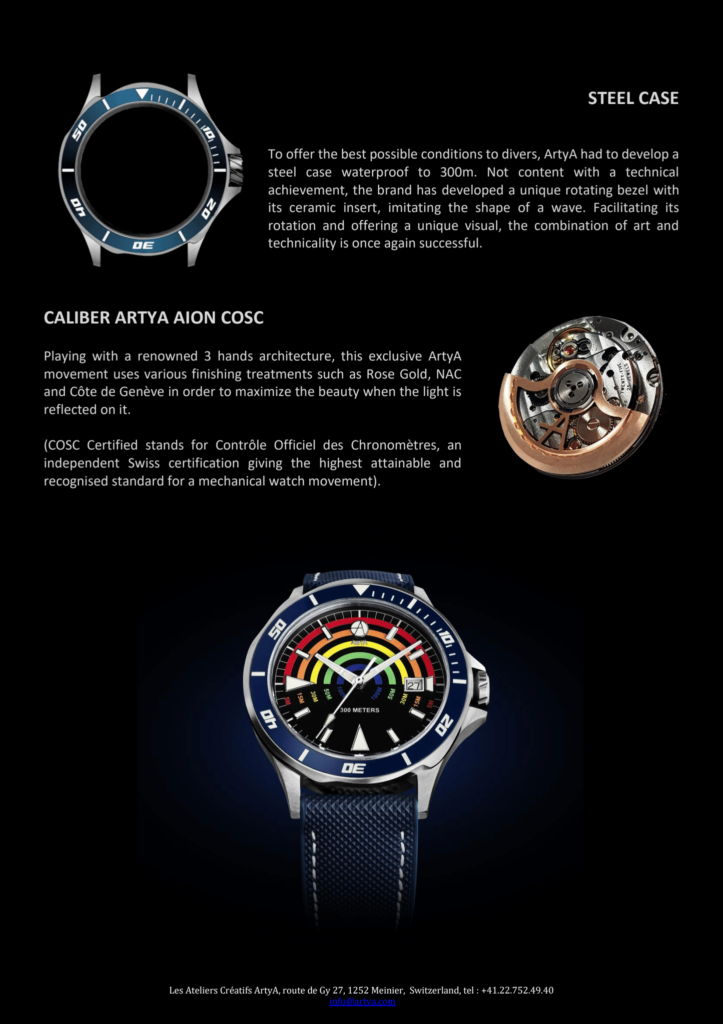
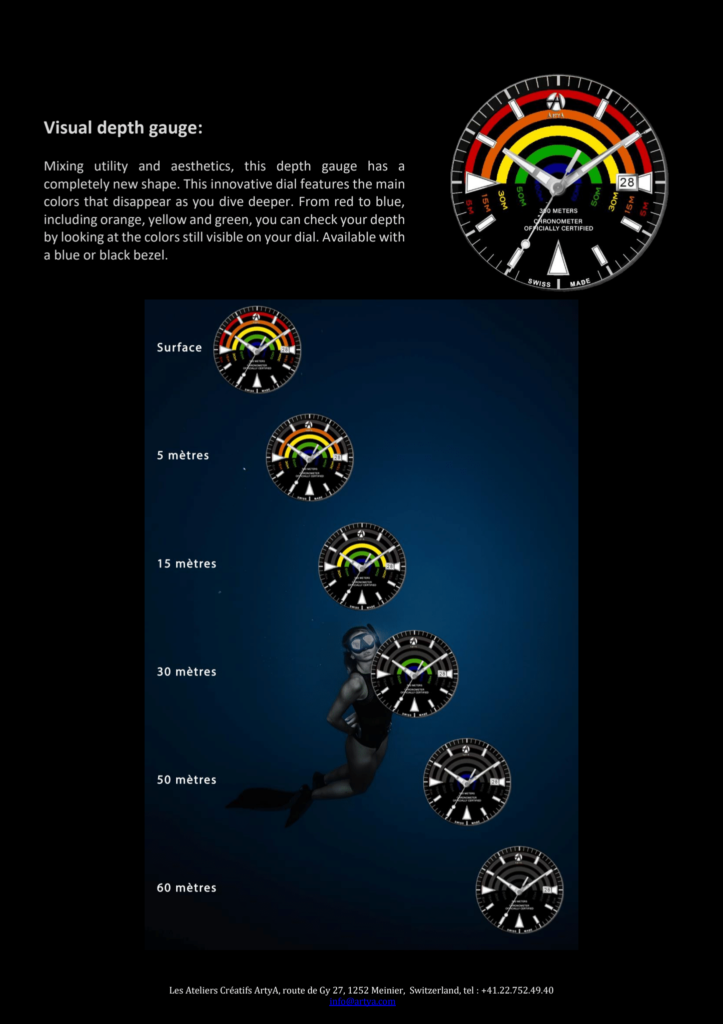
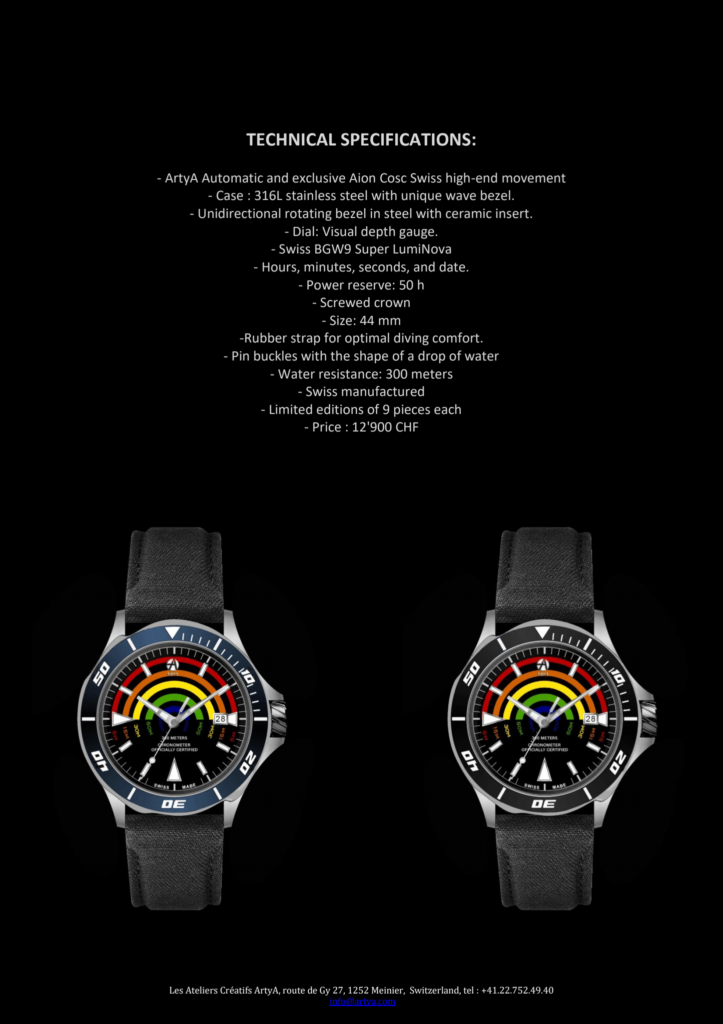




The crew at Channel 4 FM in Dubai responded when the marketing team thought it might be fun to do a live 5-10 minute broadcast segment from the Ambassador’s Lagoon outside the iconic Atlantis the Palm Resort, more or less as a publicity stunt to promote this exotic location. We’re not talking poolside, mind you, but broadcasting from within the pool – an underwater broadcast from a pool that hosts a variety of sea life!
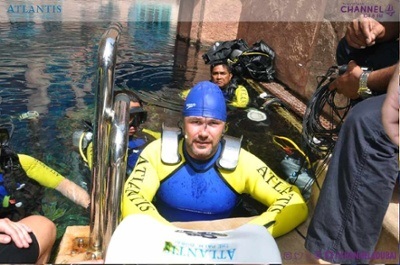 This might have been interesting enough, though such an aquatic broadcast had been done before, but the plan soon evolved into something more when Station Producer Lucas Poole (ironic, right?) suggested that Stu Tolan, host of the Celebrate Mornings breakfast show, attempt to break the record for longest underwater broadcast.
This might have been interesting enough, though such an aquatic broadcast had been done before, but the plan soon evolved into something more when Station Producer Lucas Poole (ironic, right?) suggested that Stu Tolan, host of the Celebrate Mornings breakfast show, attempt to break the record for longest underwater broadcast.
Mobile Rack featuring Telos Z/IP ONE used for underwater broadcastChannel 4 learned that this would mean staying on air and underwater for nearly five hours – no small amount of time to broadcast live while wearing scuba gear! The team was up for it, and preparations began to break the record. But would the tech hold up for such a stunt? Channel 4 IT and Broadcast Manager Muhammed Rafeeque says there were a number of challenges, and the engineering team initially didn’t feel prepared for the record-breaking broadcast.
“We were informed that one of the requirements to set the record was that the broadcast crew could not disconnect from the studio for more than two minutes, so we would need to ensure a stable link from the site of the broadcast to the main broadcast studio at all times,” Muhammed explains. In addition, the broadcast hosts would need to remain in communication with a representative from the Guinness Book of World Records, outside the pool, at all times. Muhammed continues, “These requirements presented some challenges for the technical crew to ensure these lines of communication would remain stable throughout the broadcast, and that any delays in communications or getting callers on the air would be minimal.”
Complicating things further, the resort could not provide a stable internet connection because it is reserved for guests, so the only access would be via cables. As such, a good bit of equipment would need to be hauled to the broadcast site so everything would be at the ready.
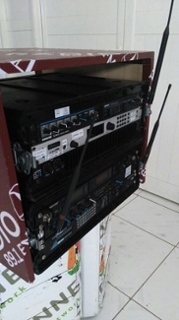 As a solution, Muhammed says the team used a router, which connected to a Telos Z/IP ONE, and then to the main broadcast studio. The studio features 100% Livewire infrastructure, so getting the audio feed into the studio would be easy using the Z/IP ONE, especially with sufficient backups. Muhammed assigned two Z/IP ONEs to the studio, so if one failed, the second one would take over and the broadcast could remain live. “For this broadcast it was all about convenience, quality, and low latency,” he points out.
As a solution, Muhammed says the team used a router, which connected to a Telos Z/IP ONE, and then to the main broadcast studio. The studio features 100% Livewire infrastructure, so getting the audio feed into the studio would be easy using the Z/IP ONE, especially with sufficient backups. Muhammed assigned two Z/IP ONEs to the studio, so if one failed, the second one would take over and the broadcast could remain live. “For this broadcast it was all about convenience, quality, and low latency,” he points out.
“For this broadcast it was all about convenience, quality, and low latency.”
—Muhammed Rafeeque, IT and Broadcast Manager, Channel 4 FM
All the coordination paid off, and on May 13th, Stu and the Channel 4 Celebrate Mornings went live from underwater! Everything went smoothly, and presenters Saif, Vicky, Helen, and Kolter, Program Director Tom Ferguson, and news reporters on hand to interview the team, joined Stu underwater at various intervals during the show, while co-presenter Eve presented poolside.
With the help of the engineering staff—Ramesh, Chandana, Chaminda, Ibrahim, Mannan, and Shahid Kazmi—and the marketing team of CEO / Group Program Director and AlMurad Group CBO Talal Murad, and assistants Neeil and Yogesh, the broadcast came off without a hitch.
 In the end, the record was not only broken, but shattered, as the broadcast went well beyond the five hour mark, giving future underwater broadcast hopefuls a high bar to shoot for. Check out the video highlights and the photo album.
In the end, the record was not only broken, but shattered, as the broadcast went well beyond the five hour mark, giving future underwater broadcast hopefuls a high bar to shoot for. Check out the video highlights and the photo album.
Mr. Abdullah Murad, Chairman Al Murad group, parent company to Channel 4, phoned Stu to congratulate him once the record was officially broken, and the Guinness Book of World Records representative on hand certified the record presented Stu with the honor at the end of the broadcast.
It certainly wasn’t your everyday broadcast, but at a place like Atlantis the Palm, “A World Away from the Everyday” is the norm. The Telos Alliance is proud to have played a small part in this unique event, and help the Channel 4 team achieve a slice of radio broadcast history. For the Silo, Dave Sarkies.
 It’s been 35 years since Save the Manatee Club was created by Jimmy Buffett, the renowned singer/songwriter, and former Florida Governor and U.S. Senator, Bob Graham, to raise public awareness about the threats to manatees and their aquatic habitat. With support from you, we can continue to make a big difference.
It’s been 35 years since Save the Manatee Club was created by Jimmy Buffett, the renowned singer/songwriter, and former Florida Governor and U.S. Senator, Bob Graham, to raise public awareness about the threats to manatees and their aquatic habitat. With support from you, we can continue to make a big difference.
Even Florida Congressman Buchanan has been working hard to ensure that Manatees remain on the endangered species list-
———————————————————————————————————————————-
Buchanan Files Formal Protest to Manatee “Survival” Plan

WASHINGTON – In a formal objection letter sent today to the U.S. Fish and Wildlife Service, Congressman Vern Buchanan, R-FL, urged the agency to withdraw its plan to strip the manatee of the highest protection afforded under the Endangered Species Act.
The public comment period on the agency’s proposal opened Jan. 7 and closes this Thursday.
Buchanan’s letter is a formal challenge to the proposed downgrading of the manatee from “endangered” to “threatened” under the Endangered Species Act (ESA).
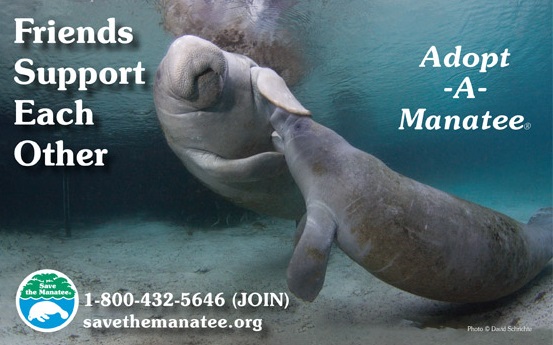 The manatee has been listed as an endangered species since 1966.
The manatee has been listed as an endangered species since 1966.
Buchanan expressed his strong opposition, noting that the agency’s analysis is based on outdated information. Buchanan pointed to the FWS’s failure to take into account manatee deaths since 2012, as well as the unpredictable nature of threats facing these creatures. He noted that 16% of the Florida manatee population died in 2013 as a result of a massive bloom of red tide algae as well as a mysterious ailment that killed a number of manatees along the state’s east coast.
“I’m concerned that weakening protections will lead to a decline in the manatee population,” Buchanan said. “Manatees are iconic residents of Florida. We should be doing all we can to ensure the survival of these gentle giants.”
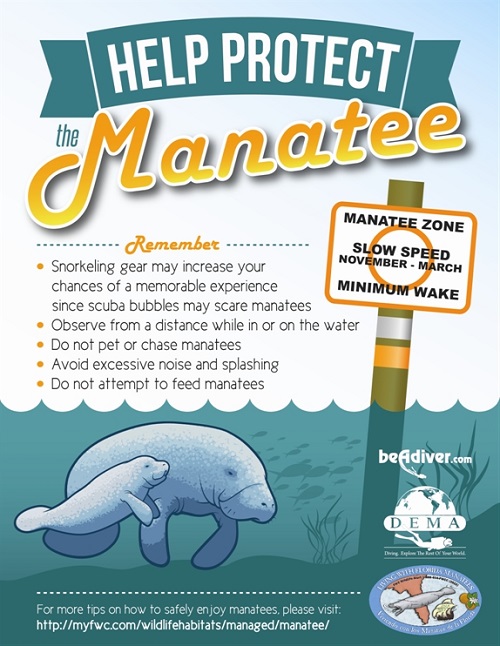 Buchanan has previously written to the Fish and Wildlife Service to emphasize that any push to weaken protections for the manatee would be “misguided and premature.” In 2014, following a three-year period in which 1,600 manatees died of cold weather or red tide, Buchanan called on FWS to maintain federal protections for manatees.
Buchanan has previously written to the Fish and Wildlife Service to emphasize that any push to weaken protections for the manatee would be “misguided and premature.” In 2014, following a three-year period in which 1,600 manatees died of cold weather or red tide, Buchanan called on FWS to maintain federal protections for manatees.
Manatees face a variety of threats to their existence, including watercraft collisions, habitat loss and red tide. Additionally, the warm water springs manatees depend on during the winter months for survival are disappearing.
Buchanan also noted that the FWS underestimates the negative consequences that a downlisting will have on importantprotections that have helped limit manatee deaths. Despite the agency’s assertion that a downlisting would not affect federal protections for the manatee, Buchanan noted the plan is “already exposing dangers” and that a move from endangered to threatened could cause a broader reassessment of state and local protections for the animals.
Just days after the proposed rule was announced, the Brevard County commissioners approved a resolution requesting that the Florida Legislature review slow-speed zones currently in place for boats and called for a reconsideration of the state’s Manatee Sanctuary Act, which established protections for manatees and their habitats in several counties, including Sarasota and Manatee.
“The manatee population has started to rebound because of the protections put in place by the Endangered Species Act,” Buchanan said. “But based on the data provided, it’s clear that we can’t assume that manatees are safe – so I’m urging caution.”
Full text of Buchanan’s letter below:
April 4, 2016
The Hon. Daniel Ashe
Director
U.S. Fish and Wildlife Service
Department of Interior
1849 C St. NW, Room 3359
Washington, D.C. 20240
Dear Director Ashe:
I write in strong opposition to the U.S. Fish and Wildlife Service’s (the Service) proposal to downlist the West Indian manatee under the Endangered Species Act (ESA) from endangered to threatened status. This decision is based on outdated information and underestimates the effect that a downlisting will have on protections that have helped limit manatee deaths. As a result, I urge you to withdraw this proposed rule.
Manatees are special for many Floridians. In addition to being the state’s official marine mammal an entire county – which I represent – is named after these gentle giants.
Just 25 years ago, there were barely over 1,000 manatees in the state of Florida. That number is now estimated to be around 6,000. The Service points to this as good news and rightfully credits the species’ listing as endangered under the ESA for this increase. The ESA has worked to help manatees overcome multiple threats to their existence. These challenges are not static, nor are they predictable. The Service should be taking a precautionary approach when it comes to the recovery of the manatee, and in light of the following concerns, the Service should withdraw its downlisting proposal and retain the manatees’ endangered status.
The basis for the Service’s proposal to reduce the status of manatees is said to be an analysis of the population’s viability. It is cited in the proposal as “Runge, 2015.” However, the Service’s proposal acknowledges that this analysis contains outdated data and information. For example, adult survival rates are based on data only through the winter of 2008-2009 and, elsewhere, the most recent information cited in the report is from 2011-2012.
Since the years used in the analysis, manatees have suffered a catastrophic die-off in the Indian River Lagoon that the U.S. Geological Service Representatives have stated cost the lives of five percent of the manatees on the U.S. east coast. During that same time, toxic algae (red tide) killed a record number of manatees on the state’s west coast. According to the Florida Fish and Wildlife Research Institute, the statewide death toll of manatees was 803 as of 2013; or around 16 percent of the state’s entire population. Yet none of this information was considered in the Service’s outdated analysis.
In addition, in its analysis, the Service assumes that the current level of mortality in each category (e.g., watercraft collisions, cold stress, red tide, etc.) will stay approximately the same indefinitely. However, this is unlikely. The likelihood of deaths from both red tide events and from unknown pathogens has not been adequately analyzed when projecting the future for manatees. Additionally, as noted by the Service itself, there will be a continued loss of artificial sources of warm water in the winter and, as a result, manatees in the Southwest and Northeast regions of the state will show “long-term decline” as a result of the loss of these warm water winter refuges.
In its January 6, 2016 press release, the Service stated that “[t]he proposal to downlist the manatee to threatened will not affect federal protections currently afforded by the ESA.” If all protections will remain the same, it is not apparent that a change in the listing status is necessary. In fact, downlisting the manatee may open the door to future erosions of protections for these unique animals.
The Service cites the existence of federal and state laws such as the Marine Mammal Protection Act and Florida Manatee Sanctuary Act as sufficient in providing the animals with the protections they need. Yet there is no guarantee that such other laws will remain in place to protect the species even if manatees are downlisted under the ESA.
Approximately fifty manatee protection areas are set up by federal, local, and industry leaders and many of these areas or their protective restrictions can be altered or removed if a downlisting goes forward. For example, despite the Service stating in its proposal that on the east coast of Florida “watercraft-related mortality is the major threat to this population,” five days after the proposed reduction in protections, the Brevard County commissioners approved a resolution requesting that the Florida Legislature review slow-speed zones for boats to determine whether they are effective or still necessary. The resolution also called for reconsidering the need for the Manatee Sanctuary Act, stating that it has “become a hindrance to effective manatee management.”
Manatees are iconic residents of Florida. Their presence drives a robust tourist industry.
Their unhurried progress in my state’s waters is a reminder to us all to slow down and appreciate the world around us. Manatees deserve better than a premature determination that they have recovered when so many threats still face them and cloud our understanding of their future. I urge continued endangered status for manatees under the ESA, and ask you to immediately withdraw the Service’s proposal to downlist manatees to threatened status.
——————————————————————————————————————————————–
Save the Manatee Club is an international nonprofit organization. Funds from our adoption program go toward emergency rescue response for sick and injured manatees, and for waterway signage, public awareness and education, research and more. Read about our manatee conservation efforts at: savethemanatee.org/smcinfo.
Thank you!
For the Silo and the manatees, Janice Nearing
Adopt-A-Manatee! Go to www.savethemanatee.org/adoptpag.htm